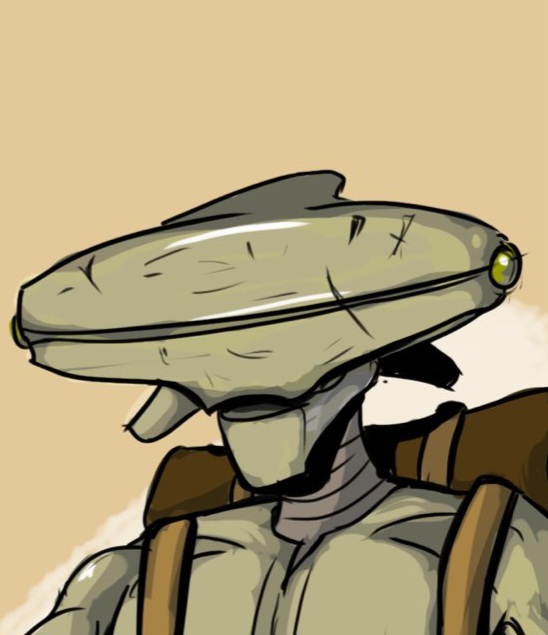The Nile crocodile (Crocodylus niloticus) is a large crocodilian native to freshwater habitats in Africa, where it is present in 26 countries. It is widely distributed throughout sub-Saharan Africa, occurring mostly in the central, eastern, and southern regions of the continent, and lives in different types of aquatic environments such as lakes, rivers, swamps, and marshlands. In West Africa, it occurs along with two other crocodilians. Although capable of living in saline environments, this species is rarely found in saltwater, but occasionally inhabits deltas and brackish lakes. The range of this species once stretched northward throughout the Nile, as far north as the Nile Delta. Generally, the adult male Nile crocodile is between 3.5 and 5 m (11 ft 6 in and 16 ft 5 in) in length and weighs 225 to 750 kg (500 to 1,650 lb). However, specimens exceeding 6.1 m (20 ft) in length and 1,000 kg (2,200 lb) in weight have been recorded. It is the largest freshwater predator in Africa, and may be considered the second-largest extant reptile in the world, after the saltwater crocodile (Crocodylus porosus). Size is sexually dimorphic, with females usually about 30% smaller than males. The crocodile has thick, scaly, heavily armoured skin.
Nile crocodiles are opportunistic apex predators; a very aggressive crocodile, they are capable of taking almost any animal within their range. They are generalists, taking a variety of prey. Their diet consists mostly of different species of fish, reptiles, birds, and mammals. They are ambush predators that can wait for hours, days, and even weeks for the suitable moment to attack. They are agile predators and wait for the opportunity for a prey item to come well within attack range. Even swift prey are not immune to attack. Like other crocodiles, Nile crocodiles have a powerful bite that is unique among all animals, and sharp, conical teeth that sink into flesh, allowing a grip that is almost impossible to loosen. They can apply high force for extended periods of time, a great advantage for holding down large prey underwater to drown.
Nile crocodiles are relatively social. They share basking spots and large food sources, such as schools of fish and big carcasses. Their strict hierarchy is determined by size. Large, old males are at the top of this hierarchy and have first access to food and the best basking spots. Crocodiles tend to respect this order; when it is infringed, the results are often violent and sometimes fatal. Like most other reptiles, Nile crocodiles lay eggs; these are guarded by the females. The hatchlings are also protected for a period of time, but hunt by themselves and are not fed by the parents.
The Nile crocodile is one of the most dangerous species of crocodile and is responsible for hundreds of human deaths every year. It is common and is not endangered, despite some regional declines or extirpations.
Characteristics
Adult Nile crocodiles have a dark bronze colouration above, with faded blackish spots and stripes variably appearing across the back and a dingy off-yellow on the belly, although mud can often obscure the crocodile's actual colour. The flanks, which are yellowish-green in colour, have dark patches arranged in oblique stripes in highly variable patterns. Some variation occurs relative to environment; specimens from swift-flowing waters tend to be lighter in colour than those dwelling in murkier lakes or swamps, which provides camouflage that suits their environment, an example of clinal variation. Nile crocodiles have green eyes.
Most morphological attributes of Nile crocodiles are typical of crocodilians as a whole. Like all crocodilians, for example, the Nile crocodile is a quadruped with four short, splayed legs, a long, powerful tail, a scaly hide with rows of ossified scutes running down its back and tail, and powerful, elongated jaws. Their skin has a number of poorly understood integumentary sense organs that may react to changes in water pressure, presumably allowing them to track prey movements in the water.
The mouths of Nile crocodiles are filled with 64 to 68 sharply pointed, cone-shaped teeth. For most of a crocodile's life, broken teeth can be replaced. On each side of the mouth, five teeth are in the front of the upper jaw.
The bite force exerted by an adult Nile crocodile has been shown by Brady Barr to measure 22 kN (5,000 lbf). However, the muscles responsible for opening the mouth are exceptionally weak, allowing a person to easily hold them shut, and even larger crocodiles can be brought under control by the use of duct tape to bind the jaws together.
The Nile crocodile is the largest crocodilian in Africa, and is generally considered the second-largest crocodilian after the saltwater crocodile. Typical size has been reported to be as much as 4.5 to 5.5 m (14 ft 9 in to 18 ft 1 in), but this is excessive for actual average size per most studies and represents the upper limit of sizes attained by the largest animals in a majority of populations.
Distribution and habitat
The Nile crocodile is presently the most common crocodilian in Africa, and is distributed throughout much of the continent. Among crocodilians today, only the saltwater crocodile occurs over a broader geographic area, although other species, especially the spectacled caiman seem to actually be more abundant.
This species’ historic range, however, was even wider. They were found as far north as the Mediterranean coast in the Nile Delta and across the Red Sea in Israel, Palestine and Syria. The Nile crocodile has historically been recorded in areas where they are now regionally extinct. For example, Herodotus recorded the species inhabiting Lake Moeris in Egypt. They are thought to have become extinct in the Seychelles in the early 19th century (1810–1820)
Today, Nile crocodiles are widely found in, among others, Somalia, Ethiopia, Uganda, Kenya, Egypt, the Central African Republic, the Democratic Republic of the Congo, Equatorial Guinea, Tanzania, Rwanda, Burundi, Zambia, Zimbabwe, Gabon, Angola, South Africa, Malawi, Mozambique, Namibia, Sudan, South Sudan, Botswana, and Cameroon.
Isolated populations also exist in Madagascar, which likely colonized the island after the extinction of the endemic crocodile Voay. In Madagascar, crocodiles occur in the western and southern parts from Sambirano to Tôlanaro. They have been spotted in Zanzibar and the Comoros in modern times, but occur very rarely.
Nile crocodiles may be able to tolerate an extremely broad range of habitat types, including small brackish streams, fast-flowing rivers, swamps, dams, and tidal lakes and estuaries.
Behaviour
Generally, Nile crocodiles are relatively inert creatures, as are most crocodilians and other large, cold-blooded creatures. More than half of the crocodiles observed by Cott (1961), if not disturbed, spent the hours from 9:00 a.m. to 4:00 p.m. continuously basking with their jaws open if conditions were sunny. If their jaws are bound together in the extreme midday heat, Nile crocodiles may easily die from overheating
Nile crocodiles usually dive for only a few minutes at a time, but can swim under water up to 30 minutes if threatened. If they remain fully inactive, they can hold their breath for up to 2 hours (which, as aforementioned, is due to the high levels of lactic acid in their blood).
Nile crocodiles have been widely known to have gastroliths in their stomachs, which are stones swallowed by animals for various purposes. Although this is clearly a deliberate behaviour for the species, the purpose is not definitively known.
Hunting and diet
Nile crocodiles are apex predators throughout their range. In the water, this species is an agile and rapid hunter relying on both movement and pressure sensors to catch any prey unfortunate enough to present itself inside or near the waterfront.
They have an ectothermic metabolism, so can survive for long periods between meals. However, for such large animals, their stomachs are relatively small, not much larger than a basketball in an average-sized adult, so as a rule, they are anything but voracious eaters.
The Nile crocodile mostly hunts within the confines of waterways, attacking aquatic prey or terrestrial animals when they come to the water to drink or to cross. The crocodile mainly hunts land animals by almost fully submerging its body under water. hey also scavenge or steal kills from other predators, such as lions and leopards
Megathreads and spaces to hang out:
- ❤️ Come listen to music and Watch movies with your fellow Hexbears nerd, in Cy.tube
- 💖 Come talk in the New Monthly queer thread
- 💛 Read about a current topic in the news
- ⭐️ October Movie Nominations ⭐️
reminders:
- 💚 You nerds can join specific comms to see posts about all sorts of topics
- 💙 Hexbear’s algorithm prioritizes struggle sessions over upbears
- 💜 Sorting by new you nerd
- 🌈 If you ever want to make your own megathread, you can go here nerd
- 🐶 Join the unofficial Hexbear-adjacent Mastodon instance toots.matapacos.dog
Links To Resources (Aid and Theory):
Aid:
- 💙Comprehensive list of resources for those in need of an abortion -- reddit link
- 💙Resources for Palestine
Theory:
New Megathread Nerds!!! :posting: i did well in the model UN thing so you nerds get another croc mega :croc-pog:
-
🐶 Join the unofficial Hexbear-adjacent Mastodon instance toots.matapacos.dog
-
🌈 If you ever want to make your own megathread, you can go here nerd
@aaaaaaadjsf @Abraxiel @Abstraction @Acute_Engles @American_Communist22 @AnarchaPrincess @Antilope @Alaskaball @Aliveelectricwire @artificialset @bbnh69420 @BigLadKarlLiebknecht @bubbalu @buh @CatEars420 @cawsby @CDommunist @Cheesewizzard @Cherufe @ClimateChangeAnxiety @clover @comi @Commander_Data @ComradeCmdrPiggy @ComradeEchidna @context @congressbaseballfan @corgiwithalaptop @crime @CrispyFern @Cromalin @CyborgMarx @Dawn_Beveridge @Dirt_Owl @Dolores @Donut @drinkinglakewater @Dryad @ElChapoDeChapo @ElGosso @el_principito @EmmaGoldman @FALGSConaut @FidelCashflow @Flinch @flowernet @forcequit @Frogmanfromlake @Gabbo @GalaxyBrain @ghosts @Goadstool @GomerPyle @GorbinOutOverHere @GoroAkechi @Grownbravy @GVAGUY3 @HarryLime @hexaflexagonbear @HoChiMaxh @Hohsia @Ho_Chi_Chungus @Ideology @InevitableSwing @iwillavengeyoufather @I_HATE_JOHN_CALVIN @jabrd @JamesConeZone @Kanna @Kaputnik @Koa_lala @kristina @LesbianLiberty @marxisthayaca
@MaxOS @MelaniaTrump @Mindfury @mkultrawide @Nakoichi @PaulSmackage @plinky @PM_ME_YOUR_FOUCAULTS @PorkrollPosadist @President_Obama @PurrLure @Ram_The_Manparts @Redcuban1959 @RNAi
@Rojo27 @RoseColoredVoid @solaranus @SorosFootSoldier @Sickos @silent_water @Sphere @Spike @spring_rabbit @ssjmarx @take_five_seconds @TankieTanuki @Teekeeus @Tervell
@TheSpectreOfGay @ThisMachinePostsHog @ultraviolet @UlyssesT @Venustum @viva_la_juche @WhatDoYouMeanPodcast @Wheaties @WhyEssEff @WIIHAPPYFEW @wtypstanaccount04 @wombat @Yanqui_UXO @Zoift @Zuzak@thelastaxolotl @WhoaSlowDownMaurice @Quimby @Lydia
@CARCOSA @liberal @ella @all_that_is_solid @KenBonesWildRide @KiraNerys @TomboyShulk @DuckNuckem @SapGreen @Zangief @scumlord @COMMENT @Antisocial_Socialist @DOPESMOKERDENG
Remember nerds, no current struggle session discussion here on the general megathread, i will ban you from the comm and remove your comment, have a good day/night :meow-coffee:
-
Income requirements to rent being like 3x actual rent = death penalty. Fuck you, die
A very good friend of mine is basically stuck living with her in laws because of this shit. Which puts her in constant contact with her husband, who she is separating from because he fucking beat her. She's basically having non stop panic attacks and I would really like for her life to get better
Never eat weed. Those cute browies you make in an easy baken over will send you through three randomly selected layers of hell for no good reason.
Other than that smok weef
Girl in my class wearing a "The Conjuring 2 In theaters June 10" shirt, maybe the most insane shirt I've ever seen
Update: I'm back but having a hard time keeping food down because of nausea from the anaesthetic.
Pope lost his blue checkmark on twitter, time for the Avignon Papacy to rise again.
Does anyone know what happened to @Alaskaball ? They just kind of up and disappeared unless I missed something. Hoping they're ok.
Me fucking around: look at all that traffic, no way Waze is right here I’m going my usual way
Me finding out: :proletariat:
wtf the people in the apartments right next to mine moved out and two different cops moved in. im fucking sandwiched
:walter-shock: radlibs when their revolution never happens because they're fucking stupid children
Man, 109, who still drives in his car everyday
Probably not great, today show!
















